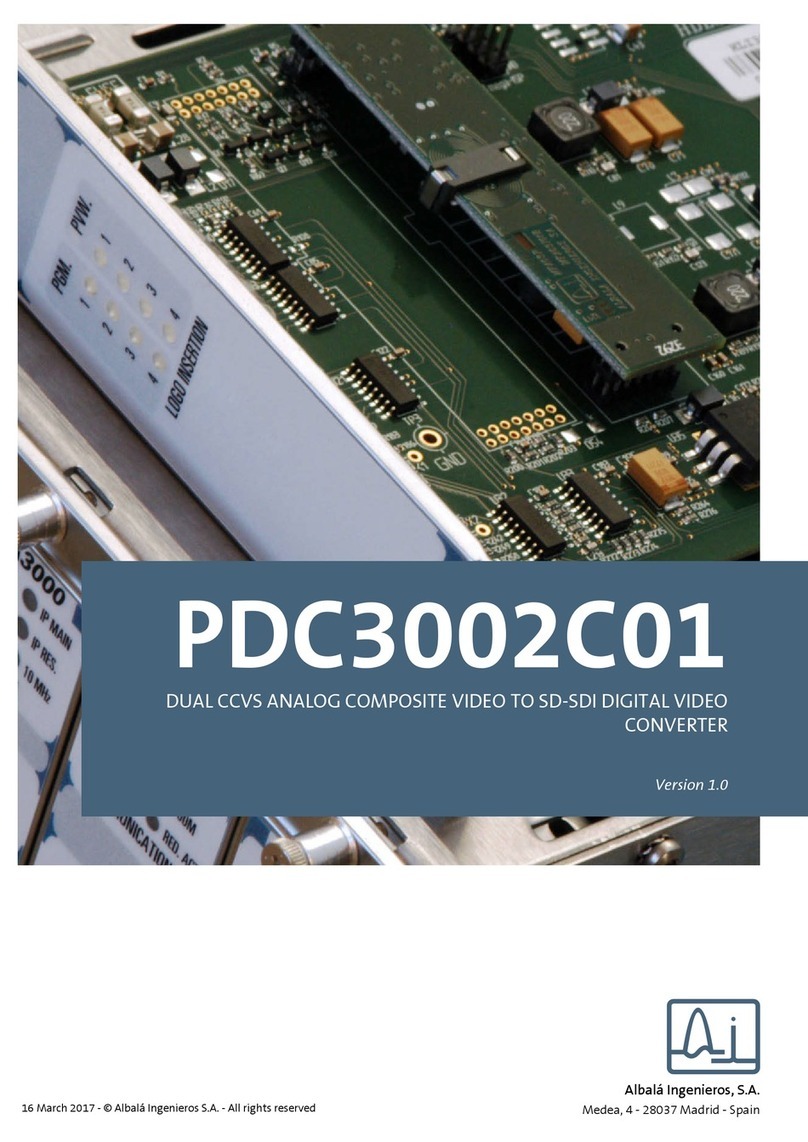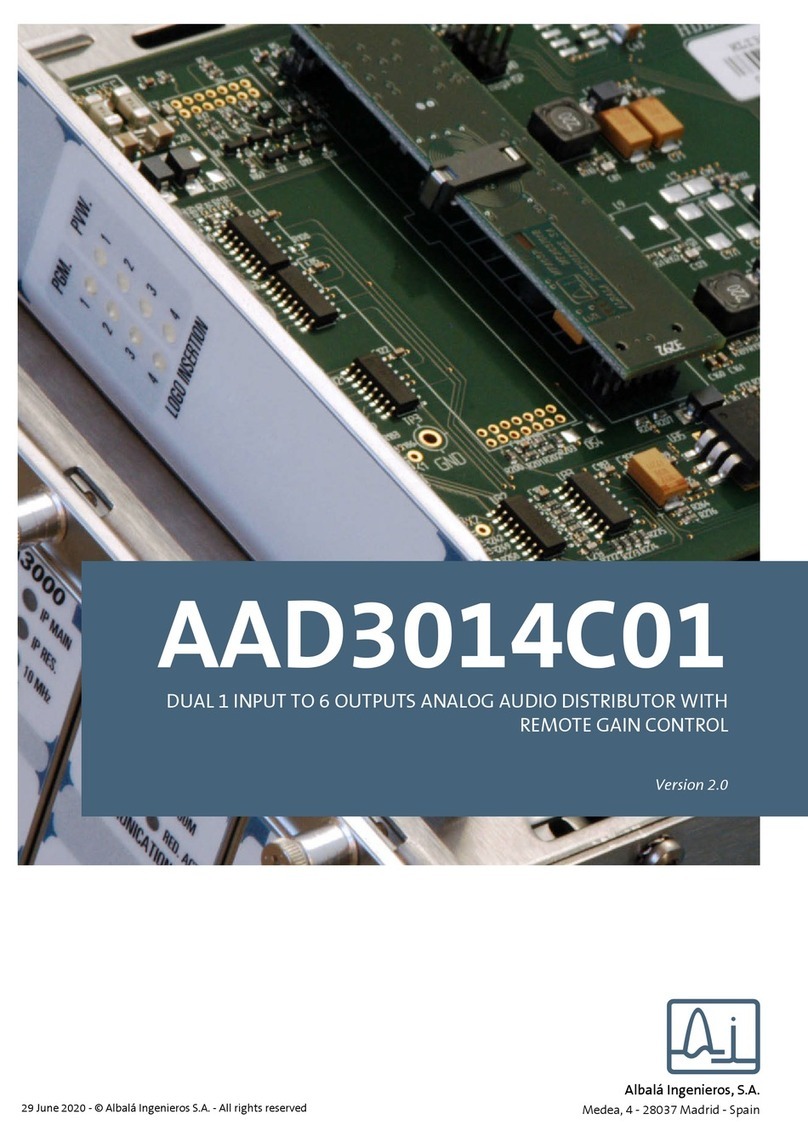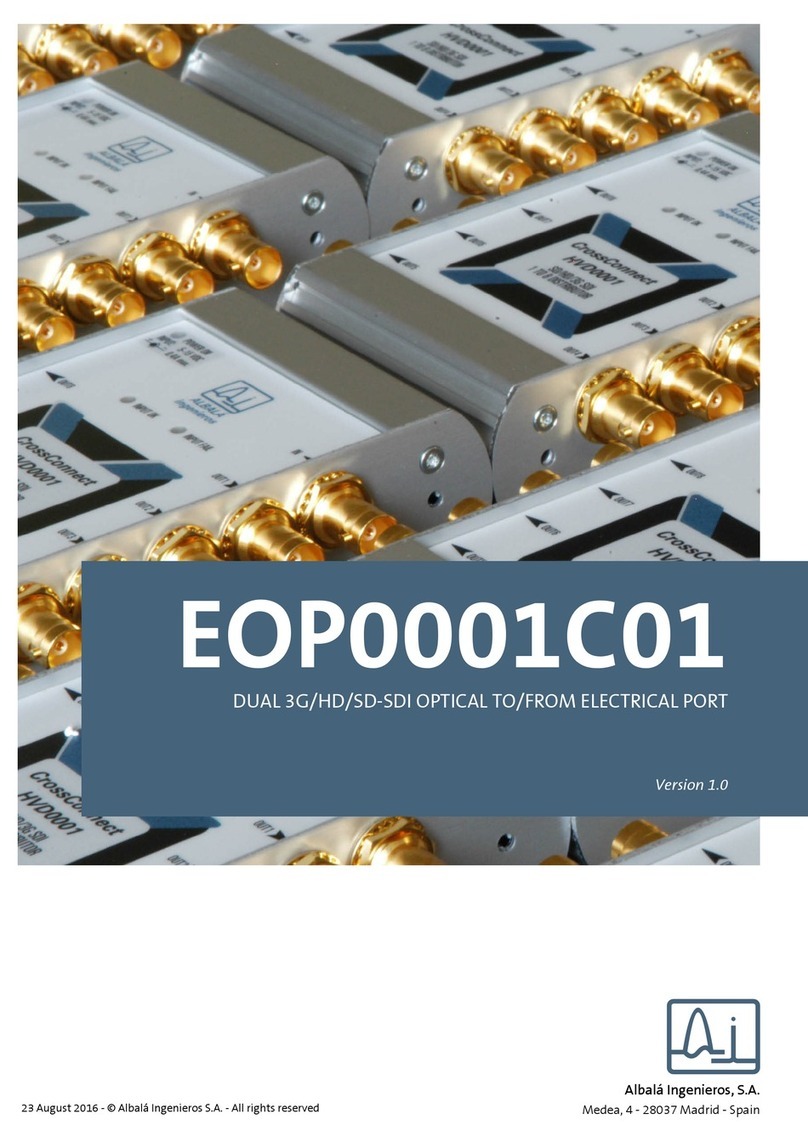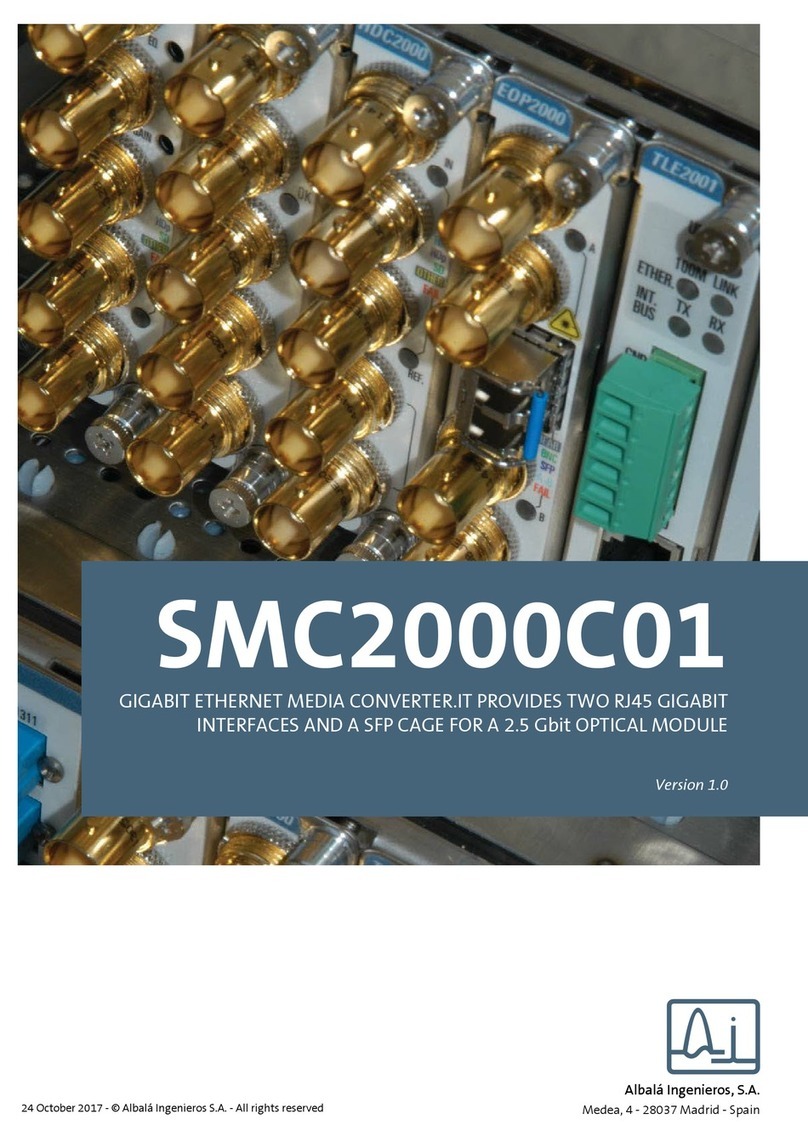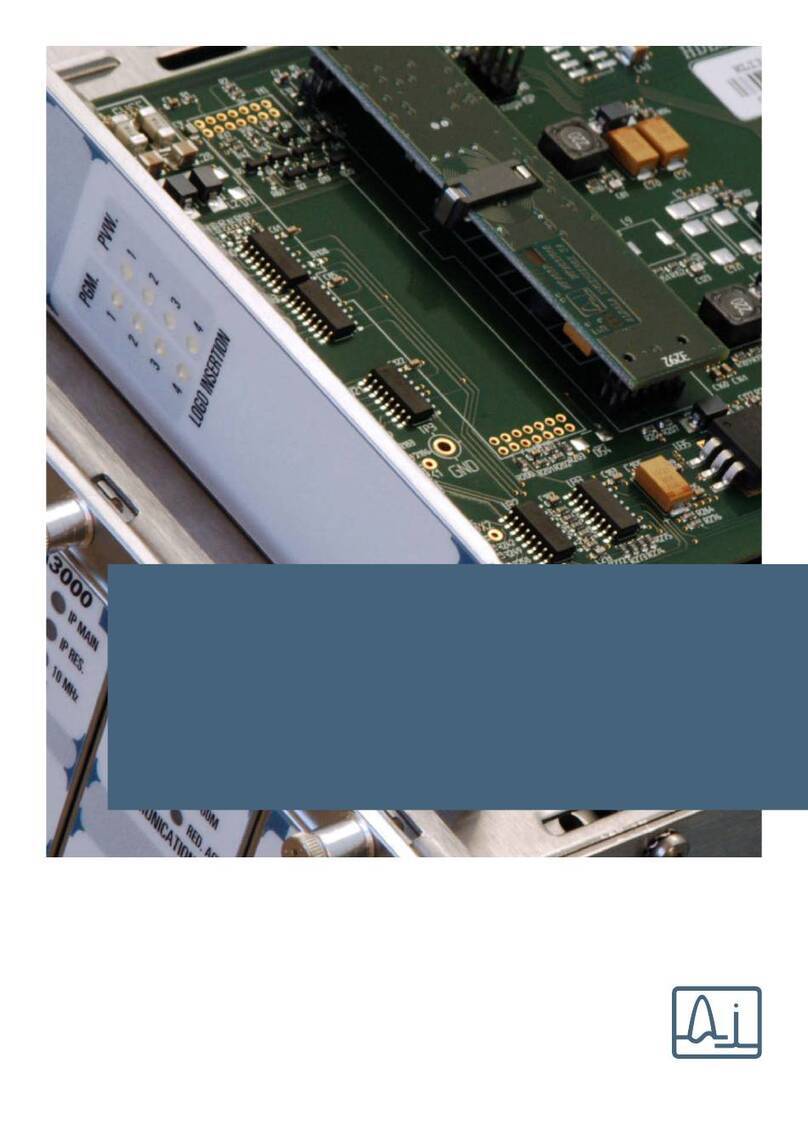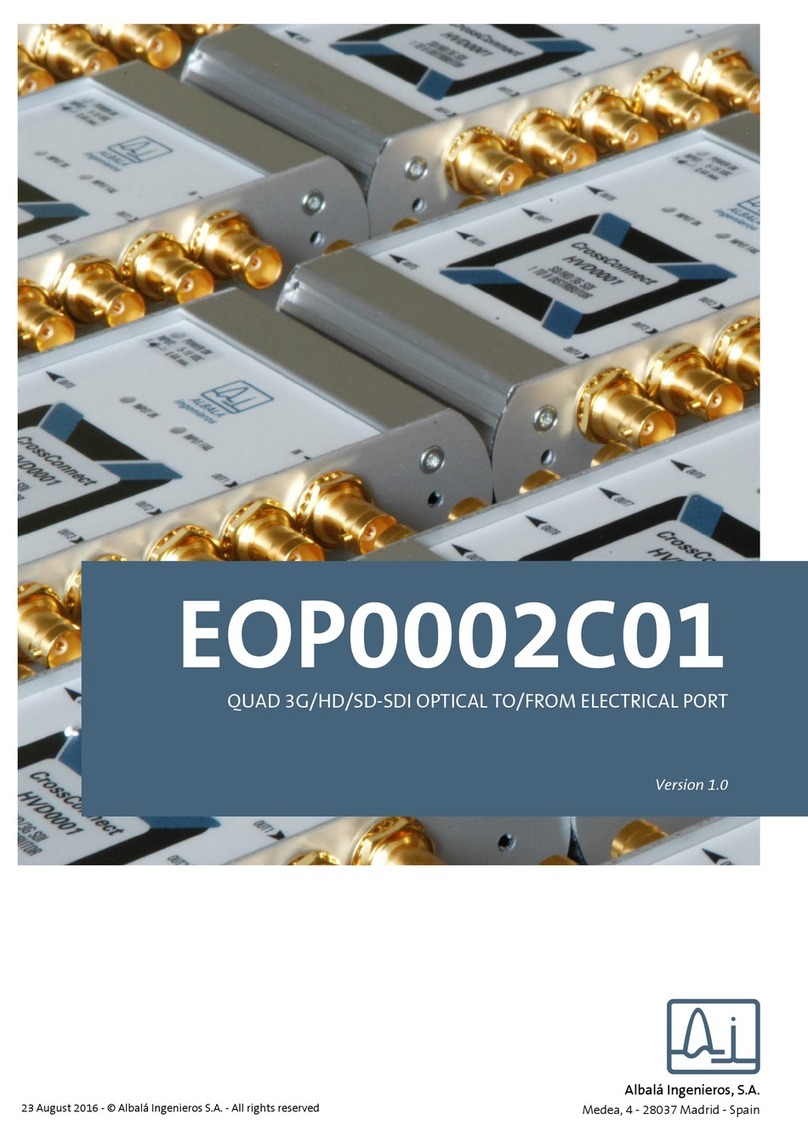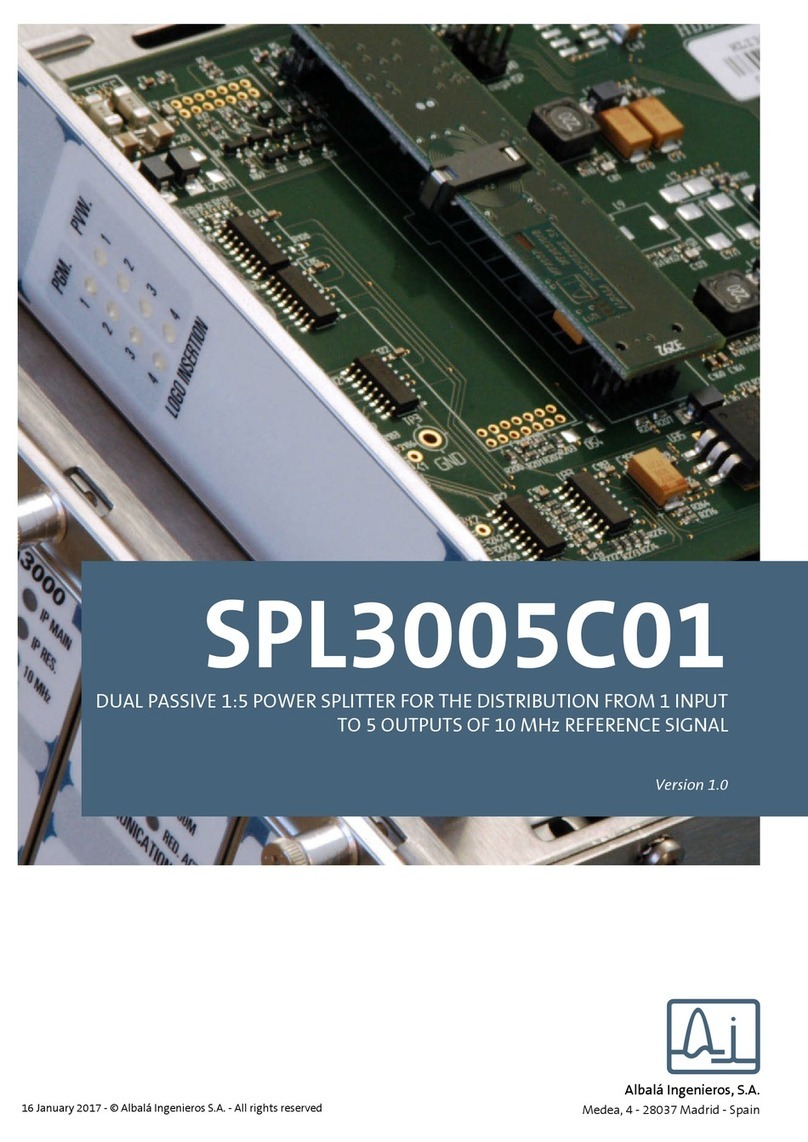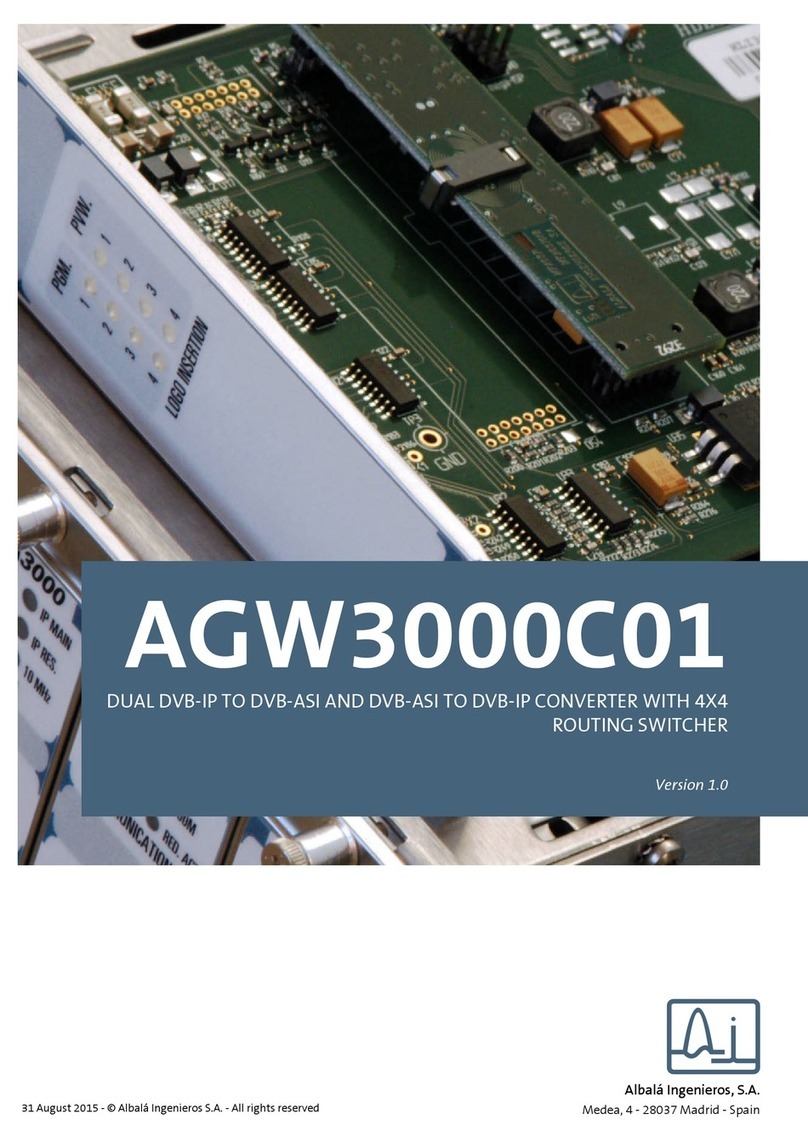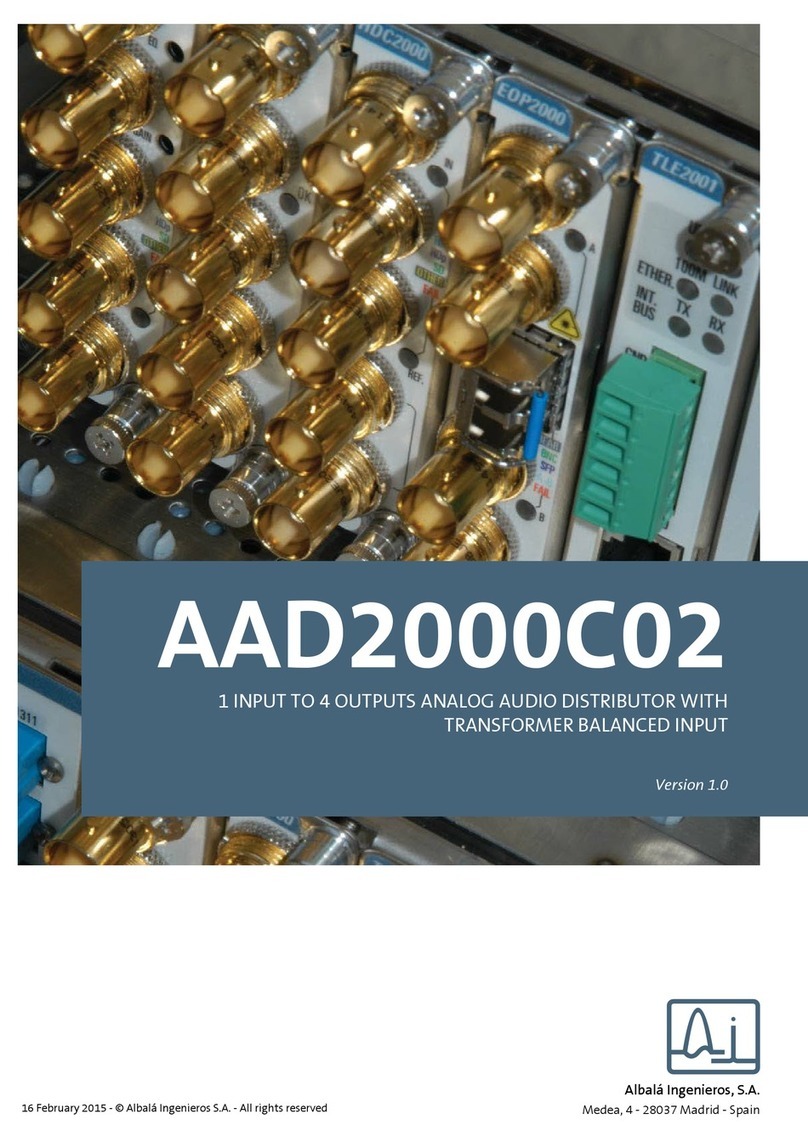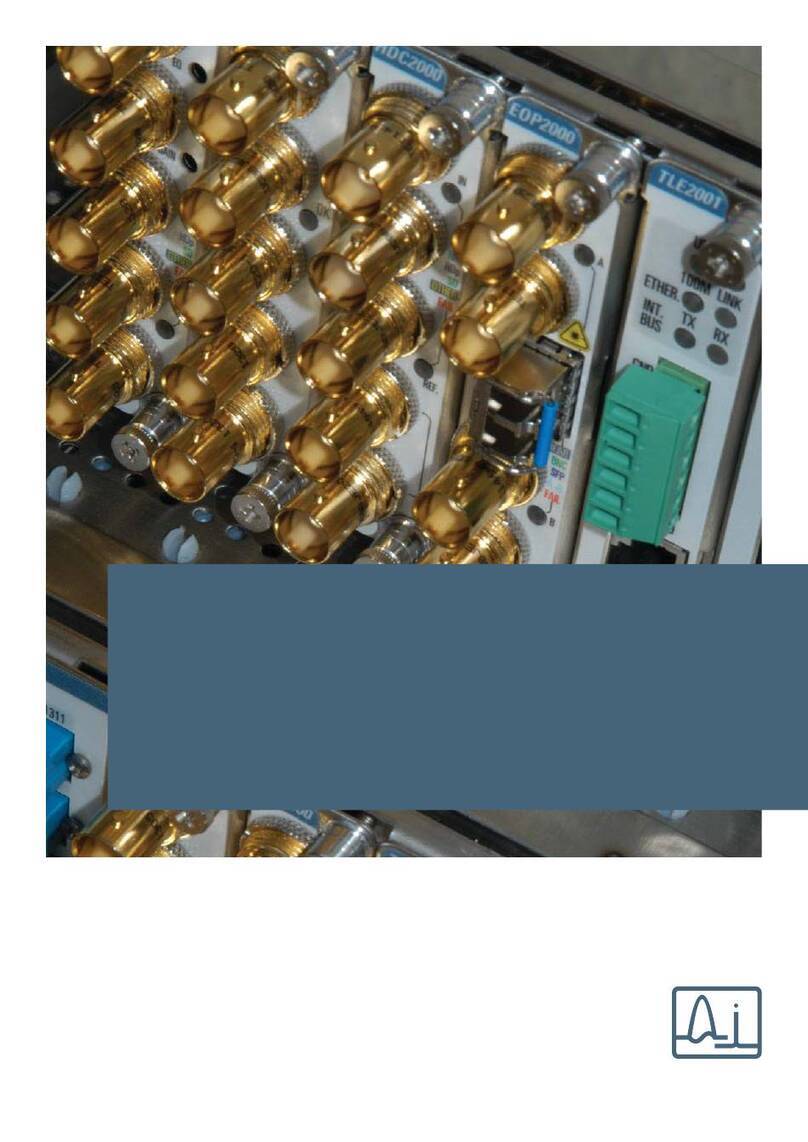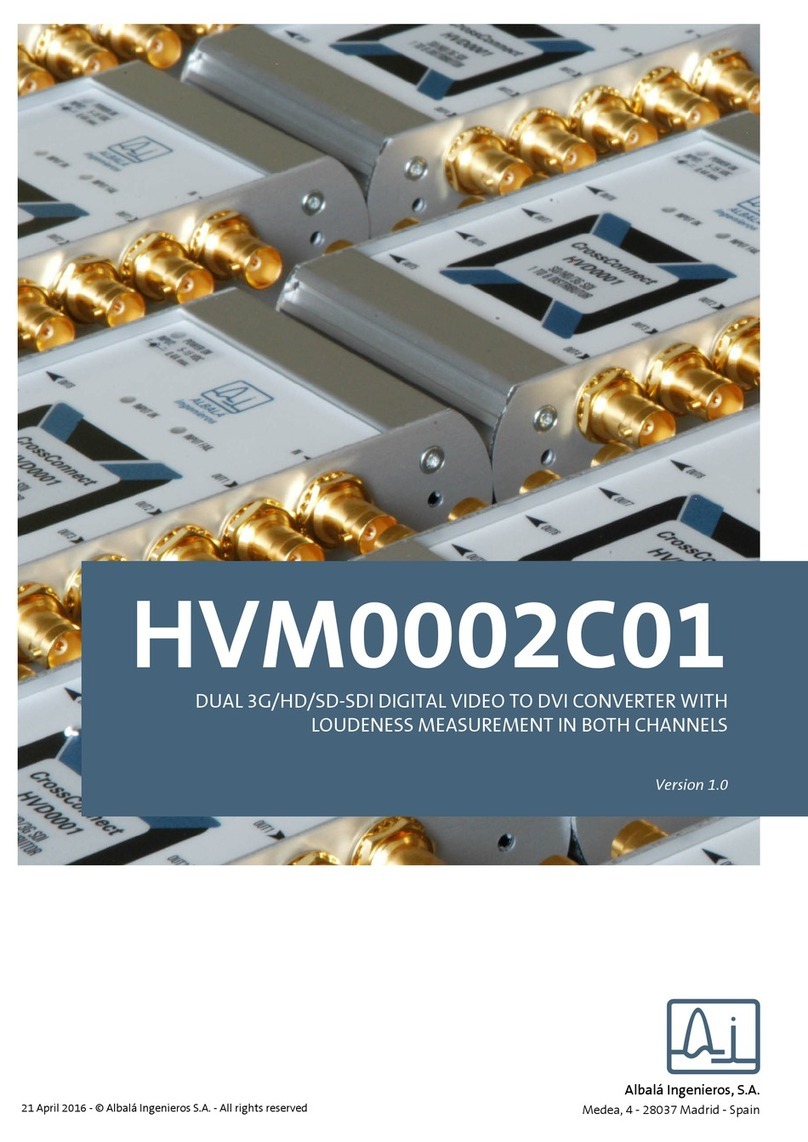
AAC3008C01
QUAD ANALOG AUDIO TO AES/EBU DIGITAL AUDIO CONVERTER
Version 1.0
1. DESCRIPTION ...................................................................................................................... 5
1.1. The AAC3008C01 ............................................................................................................................ 5
1.2. Features ............................................................................................................................................. 6
1.3. Block diagram .................................................................................................................................. 8
2. SPECIFICATIONS ................................................................................................................. 9
3. INSTALLATION .................................................................................................................. 11
3.1. Initial inspection .......................................................................................................................... 11
3.2. Safety instructions ...................................................................................................................... 11
3.3. Environmental considerations ................................................................................................ 12
3.4. Power considerations ................................................................................................................. 12
3.5. Module configuration ................................................................................................................ 12
3.6. Installing the module in the mounting frame ................................................................... 12
3.7. Interconnection ............................................................................................................................ 14
3.7.1. Digital audio connections ................................................................................................ 14
3.7.2. Analog audio connections ............................................................................................... 15
3.7.3. Analog video and word-clock connections ................................................................ 15
3.7.4. Delay signal connections .................................................................................................. 15
4. OPERATION ...................................................................................................................... 17
4.1. Front panel description .............................................................................................................. 17
4.2. Functional description ............................................................................................................... 18
4.2.1. Operation in 20 or 24 bits ................................................................................................ 18
4.2.2. Normal and Silence operation ........................................................................................ 19
4.2.3. Description of the delay line ........................................................................................... 19
4.2.4. Selection of the sampling frequency ........................................................................... 20
4.2.4.1. Automatic Mode operation .................................................................................... 20
4.2.4.2. Operation n Manual Mode ..................................................................................... 21
4.3. Description of the processing unit ........................................................................................ 21
4.4. Module remote control and supervision ............................................................................. 22
4.4.1. Details of the AAC3008C01 registers ........................................................................... 23
5. GLOSSARY ........................................................................................................................ 27
6. REGULATIONS .................................................................................................................. 29
7. VERSIONS ......................................................................................................................... 31
